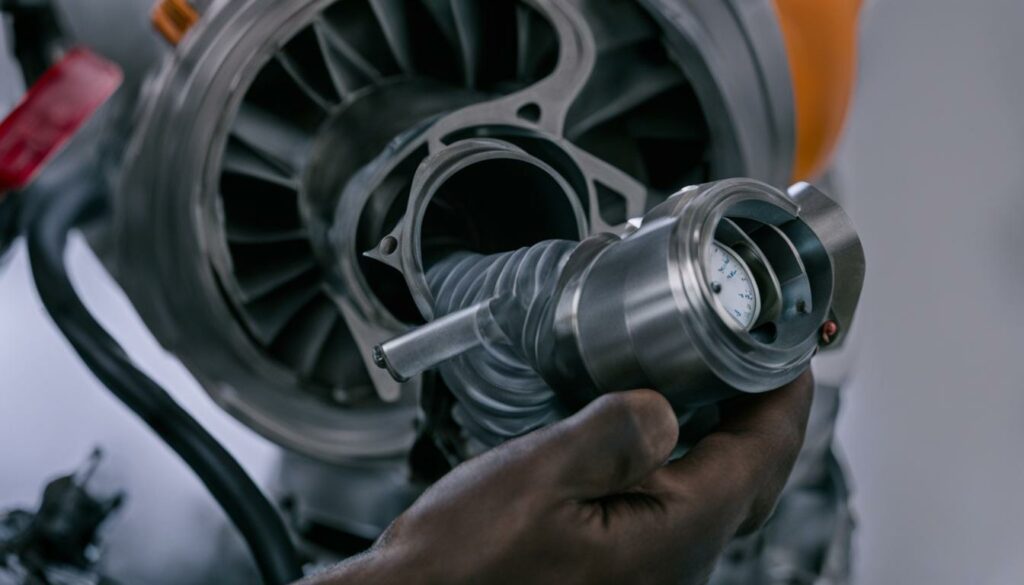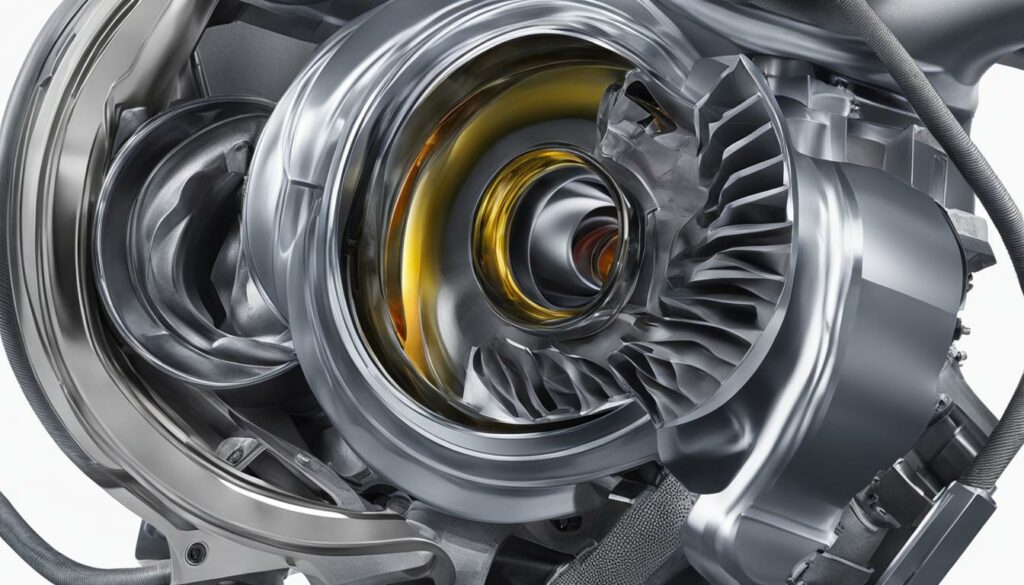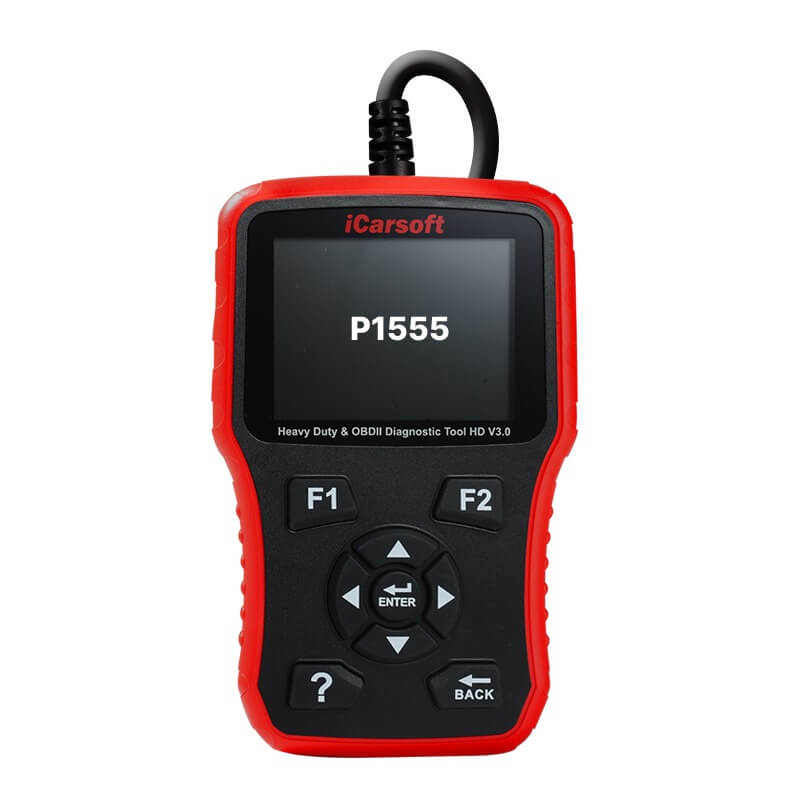P1555 – Charge Air System Leak – Turbocharger Side
POSTED IN pcodes
Welcome to our article on the P1555 fault code, which indicates a charge air system leak on the turbocharger side. If you’re experiencing reduced power output, irregular behavior during acceleration, or the sound of escaping air when accelerating, this fault code could be the culprit.
With this article, we aim to provide you with a comprehensive understanding of the symptoms, causes, troubleshooting, and repair steps for this issue. By the end, you’ll have the knowledge you need to address the charge air system leak effectively and prevent further damage to your turbocharger and engine.
To get started, let’s dive into the symptoms associated with the P1555 fault code and its impact on your vehicle’s performance.
Symptoms of P1555 – Charge Air System Leak
When it comes to identifying a charge air system leak on the turbocharger side, it is crucial to be aware of the symptoms that may indicate such an issue. Some of the common symptoms include:
- Reduced power output
- Irregular behavior during acceleration
- The sound of escaping air when accelerating
These symptoms are clear indicators of a problem within the turbocharger system. The reduced power output and irregular acceleration behavior often stem from the turbocharger malfunctioning due to air leaks in the charge air system. When air escapes during acceleration, it can result in a noticeable sound, signaling the presence of a leak.
Buy tested tuning file for Adblue / EGR / DPF / Adblue off now!
If left unaddressed, a charge air system leak can lead to further damage to both the turbocharger and the engine. Therefore, it is essential to promptly diagnose and resolve these symptoms to ensure optimal performance and prevent any potential complications.
Causes of Charge Air System Leak on the Turbocharger Side
When it comes to a charge air system leak on the turbocharger side, there are several common causes that can lead to this issue. These causes include:
- Incorrectly connected or disconnected hoses
- Blocked or leaking hoses
- Malfunctioning solenoid valves for boost pressure control
- Turbocharger defects
These issues can result in air leaks within the turbocharger system, which can significantly impact the performance of the vehicle and potentially cause damage to the turbocharger itself. To resolve this problem, it is crucial to thoroughly inspect the system and address any underlying causes.
One of the main causes of a charge air system leak is incorrectly connected or disconnected hoses. This can occur due to poor installation, improper maintenance, or accidental damage. When the hoses are not properly connected, air can escape, leading to a decrease in system pressure and reduced turbocharger efficiency.
Blocked or leaking hoses are another common cause of charge air system leaks. Over time, debris, dirt, or oil can accumulate within the hoses, causing blockages or creating small gaps where air can escape. These leaks, even if small, can have a significant impact on the overall performance of the turbocharger.
Malfunctioning solenoid valves for boost pressure control can also contribute to charge air system leaks. These valves play a crucial role in regulating the boost pressure within the system. If they become faulty or fail to function correctly, it can result in air leaks and affect turbocharger performance.
Turbocharger defects can also be a cause of charge air system leaks. Defective or damaged turbochargers can develop cracks or gaps where air can escape, leading to reduced performance and potential damage to the entire system.
To detect and address charge air system leaks on the turbocharger side, it is recommended to perform regular air leak detection tests. These tests help identify any leaks within the system, allowing for prompt repairs and avoiding further damage.
Common Causes of Charge Air System Leak:
| Cause | Description |
|---|---|
| Incorrectly connected or disconnected hoses | Hoses not properly connected or disconnected, allowing air to escape. |
| Blocked or leaking hoses | Hoses blocked by debris, dirt, or oil, or with small gaps where air can escape. |
| Malfunctioning solenoid valves for boost pressure control | Faulty valves affecting boost pressure regulation and leading to air leaks. |
| Turbocharger defects | Defective or damaged turbochargers with cracks or gaps allowing air to escape. |
By identifying and addressing these causes, it is possible to resolve charge air system leaks on the turbocharger side, ensuring optimal performance and longevity of the turbocharger system.
Troubleshooting P1555 – Charge Air System Leak
To effectively troubleshoot and diagnose a charge air system leak on the turbocharger side, it is essential to follow a systematic approach. By performing the following steps, you can identify the specific cause of the leak and determine the appropriate repair steps:
- Check the charge pressure control: Inspect the charge pressure control system for any abnormalities or malfunctions. This includes checking the pressure sensor, control valves, and related components. Identify any potential issues that may affect the proper operation of the charge air system.
- Inspect the solenoid valve for boost pressure control: The solenoid valve plays a crucial role in regulating the boost pressure in the charge air system. Check for any signs of damage, clogging, or malfunctioning that may result in a leak. Clean or replace the solenoid valve as necessary.
- Verify the connection of hoses and pipes: Ensure that all hoses and pipes in the charge air system are connected correctly and securely. Inspect for any loose connections, cracks, or leaks. Repair or replace damaged components to eliminate potential leaks.
- Perform a thorough visual inspection: Carefully examine the charge air system for any visible signs of leaks, such as oil stains, excessive oil residue, or damaged components. Pay close attention to areas where leaks are more likely to occur, such as connections, gaskets, and seals.
- Utilize diagnostic tools: Use diagnostic tools, such as pressure testers or smoke machines, to locate hard-to-detect air leaks. These tools can help pinpoint the exact location of the leak and assist in making accurate repairs.
By following these troubleshooting steps, you can effectively diagnose and address a charge air system leak on the turbocharger side. Remember to document any findings and take necessary actions based on the specific cause of the leak. Proper troubleshooting not only resolves the immediate issue but also helps prevent future problems with the charge air system.
| Troubleshooting Steps | Description |
|---|---|
| Check the charge pressure control | Inspect the pressure sensor, control valves, and related components for abnormalities or malfunctions. |
| Inspect the solenoid valve for boost pressure control | Check for signs of damage, clogging, or malfunctioning in the solenoid valve. Clean or replace as necessary. |
| Verify the connection of hoses and pipes | Ensure all connections are secure and free from leaks or damage. Repair or replace as needed. |
| Perform a thorough visual inspection | Examine the charge air system for visible signs of leaks, such as oil stains or damaged components. |
| Utilize diagnostic tools | Use pressure testers or smoke machines to locate hard-to-detect air leaks and aid in repairs. |

Repairing P1555 – Charge Air System Leak
When faced with a charge air system leak on the turbocharger side, it is crucial to address the specific cause of the issue to ensure an effective repair. This may involve replacing or repairing faulty components such as hoses, solenoid valves, and turbochargers. Care must be taken to ensure the proper installation and connection of all components, and thorough testing should be conducted to verify the effectiveness of the repair.
Regular maintenance and inspection of the turbocharger system play a vital role in preventing future issues. By staying vigilant and identifying potential defects or weaknesses in the system, you can take proactive measures to avoid costly repairs and prolonged downtime.
Remember, timely repairs and diligent maintenance are key to keeping your charge air system and turbocharger in optimal condition, ensuring reliable performance and extending their lifespan.

Next Steps for Turbocharger System Repair
To guide you through the repair process, here are essential steps to follow:
- Identify the specific component causing the charge air system leak. This may require a thorough inspection and testing of various elements.
- If the issue lies with hoses, carefully replace any damaged or worn-out parts. Ensure the new hoses are compatible and properly connected.
- In the case of solenoid valve malfunctions, consider cleaning or replacing the faulty valves to restore proper boost pressure control.
- If a defective turbocharger is the culprit, consult a professional technician for guidance on repair or replacement options.
- Tip: Keep in mind that while replacing components, it’s good practice to use genuine and high-quality parts to ensure long-lasting repairs.
Once all repairs are complete, it is crucial to perform thorough testing to verify the effectiveness of the repair. This may include pressure testing the charge air system and conducting a comprehensive quality check to ensure peak performance.
Additionally, remember to document the repair process, including any specific steps taken and replacement parts used. Having an accurate record can be valuable for future reference and help identify patterns or recurring issues with your turbocharger system.
Conclusion
In conclusion, the P1555 fault code indicates a charge air system leak on the turbocharger side. This issue can have significant implications for the performance and longevity of your vehicle’s turbocharger. Understanding the technical description, meaning, and severity of this fault code is crucial to effectively address the problem.
By recognizing the symptoms associated with a charge air system leak, such as reduced power output and irregular behavior, you can take prompt action to diagnose and resolve the issue. It is important to identify and address the underlying causes, which can range from disconnected or blocked hoses to malfunctioning solenoid valves and turbocharger defects.
Once you have identified the cause of the leak, it is essential to follow the appropriate repair steps. This may involve replacing or repairing faulty components, such as hoses, solenoid valves, or even the turbocharger itself. Regular maintenance and inspection of the turbocharger system are vital to ensure optimal performance and prevent future issues.
If you are unable to access professional assistance, you may consider alternative solutions such as permanently removing the fault code. However, it is advisable to consult with an expert to ensure the best course of action for your specific situation. By taking proactive measures and prioritizing turbocharger maintenance, you can safeguard the efficiency and reliability of your vehicle’s charge air system.
FAQ
What does the P1555 fault code indicate?
The P1555 fault code indicates a charge air system leak on the turbocharger side.
What are the symptoms of a charge air system leak on the turbocharger side?
The symptoms can include reduced power output, irregular behavior during acceleration, and the sound of escaping air when accelerating.
What are the common causes of a charge air system leak on the turbocharger side?
The common causes can include incorrectly connected or disconnected hoses, blocked or leaking hoses, malfunctioning solenoid valves for boost pressure control, and turbocharger defects.
How can I troubleshoot a charge air system leak on the turbocharger side?
You can troubleshoot by checking the charge pressure control, inspecting the solenoid valve for boost pressure control, and verifying the connection of hoses and pipes in the system.
How do I repair a charge air system leak on the turbocharger side?
The repair involves addressing the specific cause of the issue, which may include replacing or repairing faulty components such as hoses, solenoid valves, and turbochargers.


